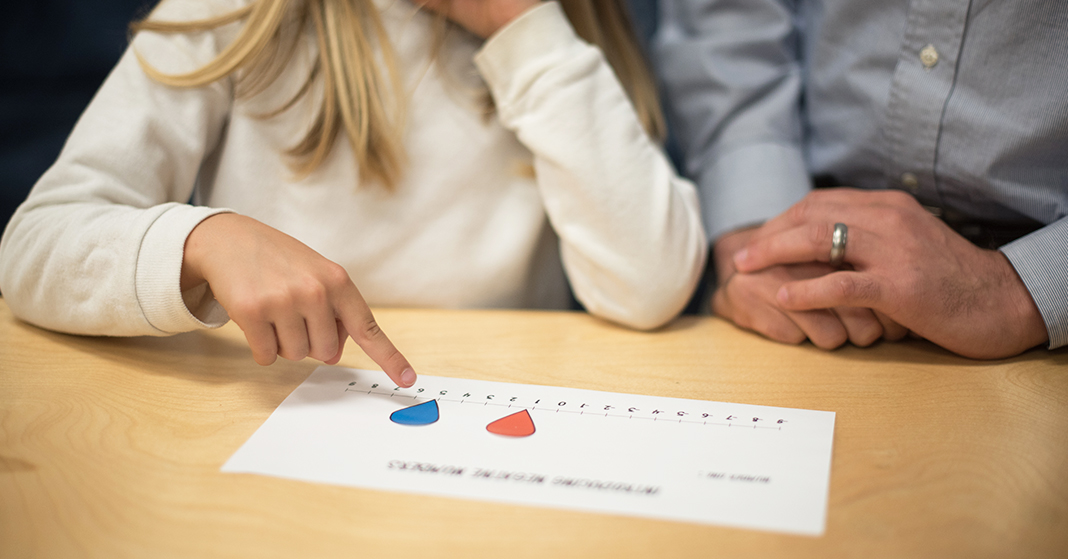
By the time I got to junior high, I was really confused about negative numbers. At first it was simple, but concepts like multiplying negatives and absolute value taxed my understanding. Of course, I joined in on the chorus sung by every math student who doesn’t understand what he or she is supposed to be learning: “When am I ever going to use this?” Once I reached high school, I realized that negative numbers play a significant role in science. Today, negative numbers play a major role in my problem solving in home budgeting and in business.
So how can we set up children for success when they start using negative numbers so they can solve ever more complex problems? The answer is exposure, development, and mastery. We need to expose children to significant concepts well before they need them to problem solve. Next we need to develop their understanding on the path to mastery. Then, children will be ready for success later on.
Exposing a New Concept
I’ve learned that with negative numbers you need to expose your child to the concept in the elementary grades. A good time to begin is in the second half of fourth grade. At this point in their math journey, children are ready to explore negative values but not quite ready to perform mathematical operations with those numbers.
If you live in a northern state, your child may have been exposed to negative numbers through real-life winter temperature. In the South, we’re never sure what to do when the mercury drops below 20 degrees Fahrenheit, so my daughters will need some other exposure to real-world negative numbers.
Interacting with Negative Numbers
So how do we introduce children to negative numbers? As with all math concepts, we need to make observations with our children as we do hands-on activities—but how? What makes negatives difficult for children initially is that you can’t look at or touch negative three apples.
The best way to interact with negative numbers is with a number line. Try the following questioning strategy for introducing your child to negative numbers.
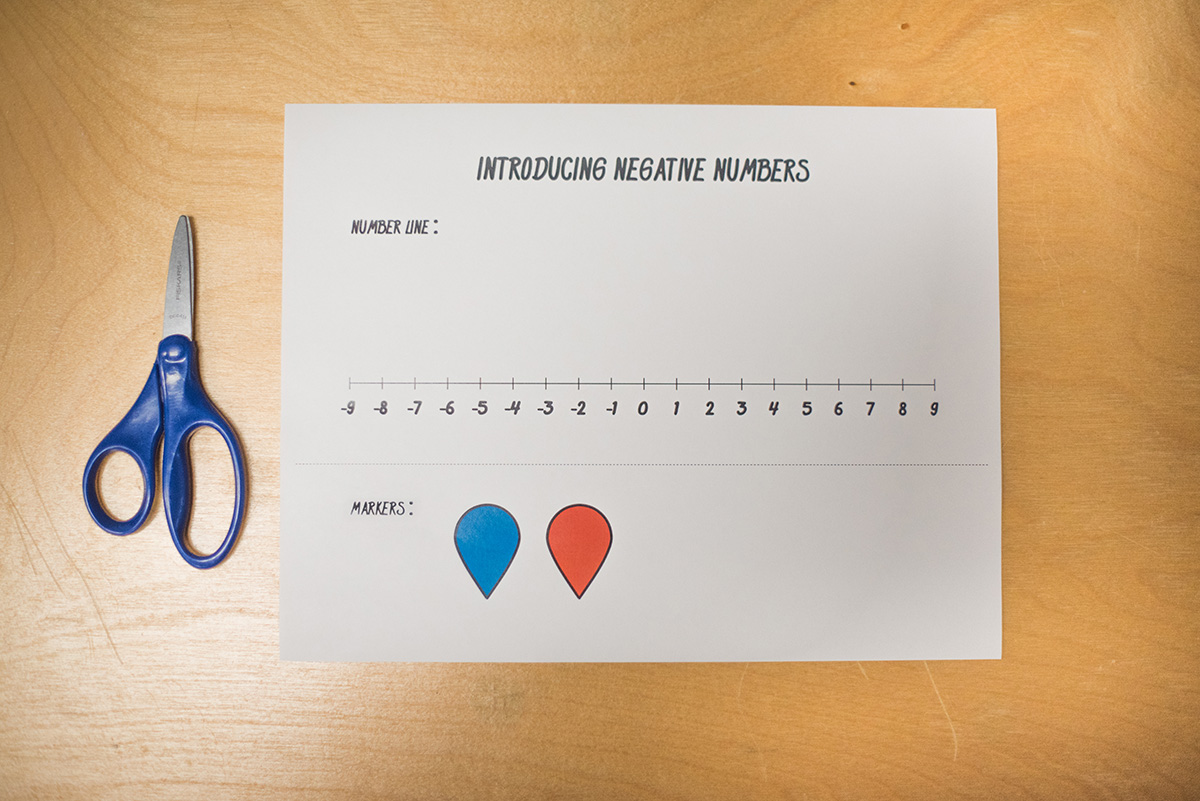 Materials
Materials
You can use this printable, which includes the following:
- Number line (from negative 9 to positive 9)
- Markers to cut out
(BJU Press has also created a fourth-sixth grade manipulative kit that helps children learn this and other math concepts.)
Activity
- Give your child the number line and the markers.
- Ask your child to place the blue marker above the number 5. This will be a point of reference.
- Ask your child to place the red marker above the number 7. Ask, “Which of the two numbers is larger?” and “Is it farther to the left or farther to the right?” Point out that the larger number is to the right and the smaller is to the left.
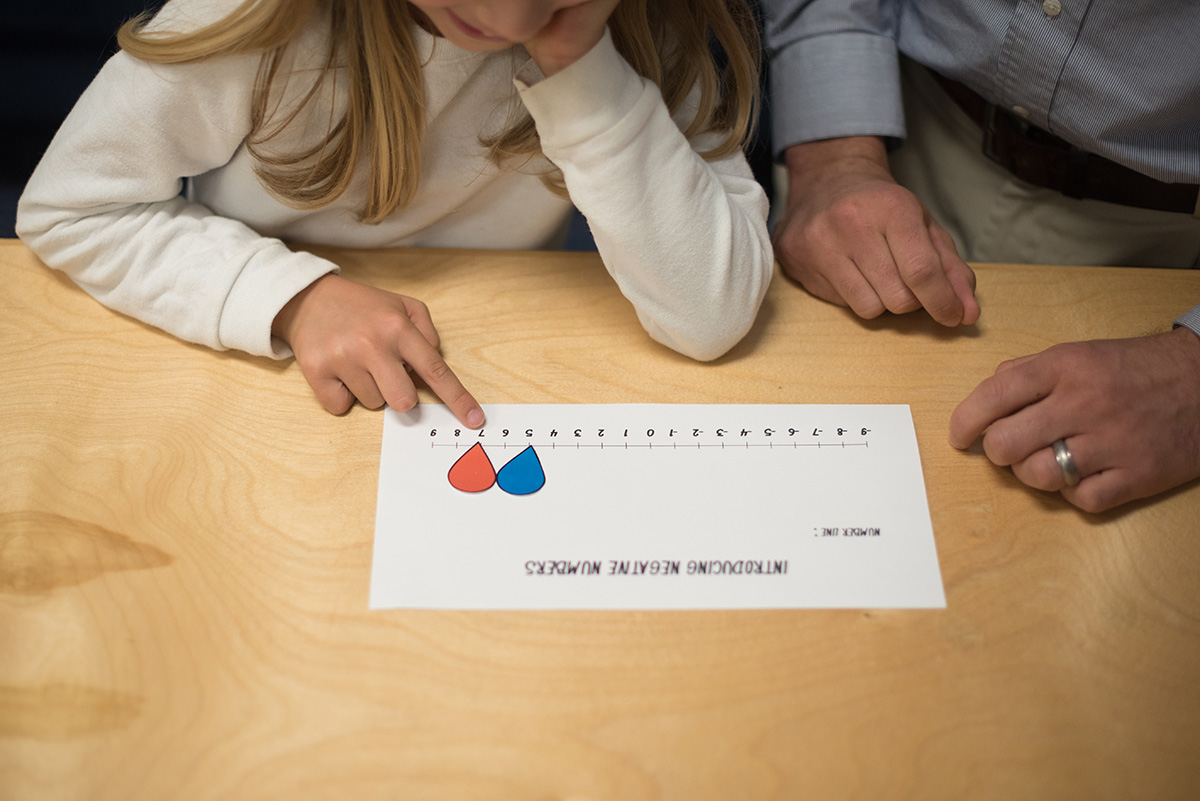
- Direct your child to take the red marker from 7 and put it above the number 1.
- Ask, “Now which number is the larger?” and “Is it farther to the left or to the right?”
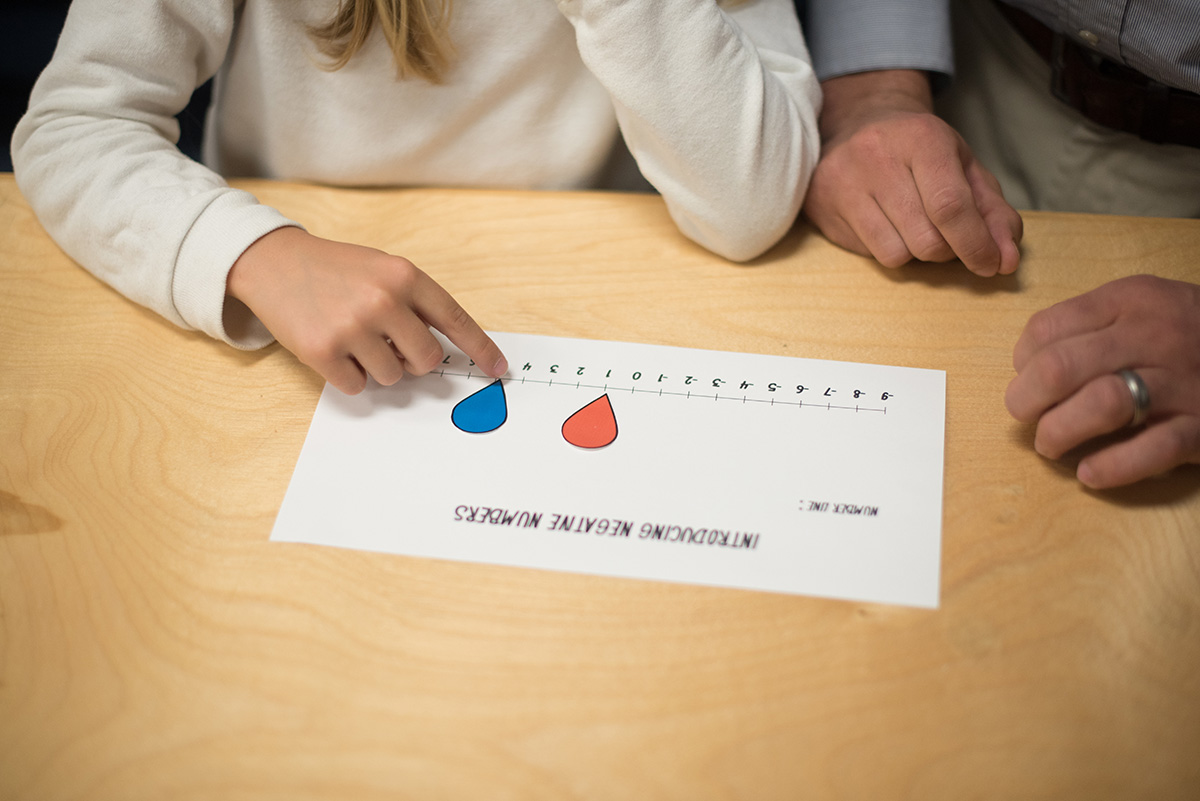
- Have your child move the red marker above number negative 1.
- Ask, “What do we call that first number to the left of zero?” Your child might say, “Minus 1.” Explain that it is called negative one and that any time that negative symbol appears before a stand-alone number, it shows the number is less than zero.
Seeing the Math
This is a critical point because your child is going to compare two negative numbers. In your child’s experience, 7 has always been more than 1. But when both are to the left of zero (negative), the 1 is larger. This may seem obvious to an adult, but to a child it is counterintuitive. Allow your child to be “wrong” without correcting. You can set up the manipulatives so your child can see the difference.
- Leaving the red marker on the negative 1, ask your child to move the blue marker to negative 7. Ask, “Which number do you think is larger, negative 1 or negative 7? Remember when we compared 1 and 5, which number was larger? Was it farther to the left or farther to the right?”
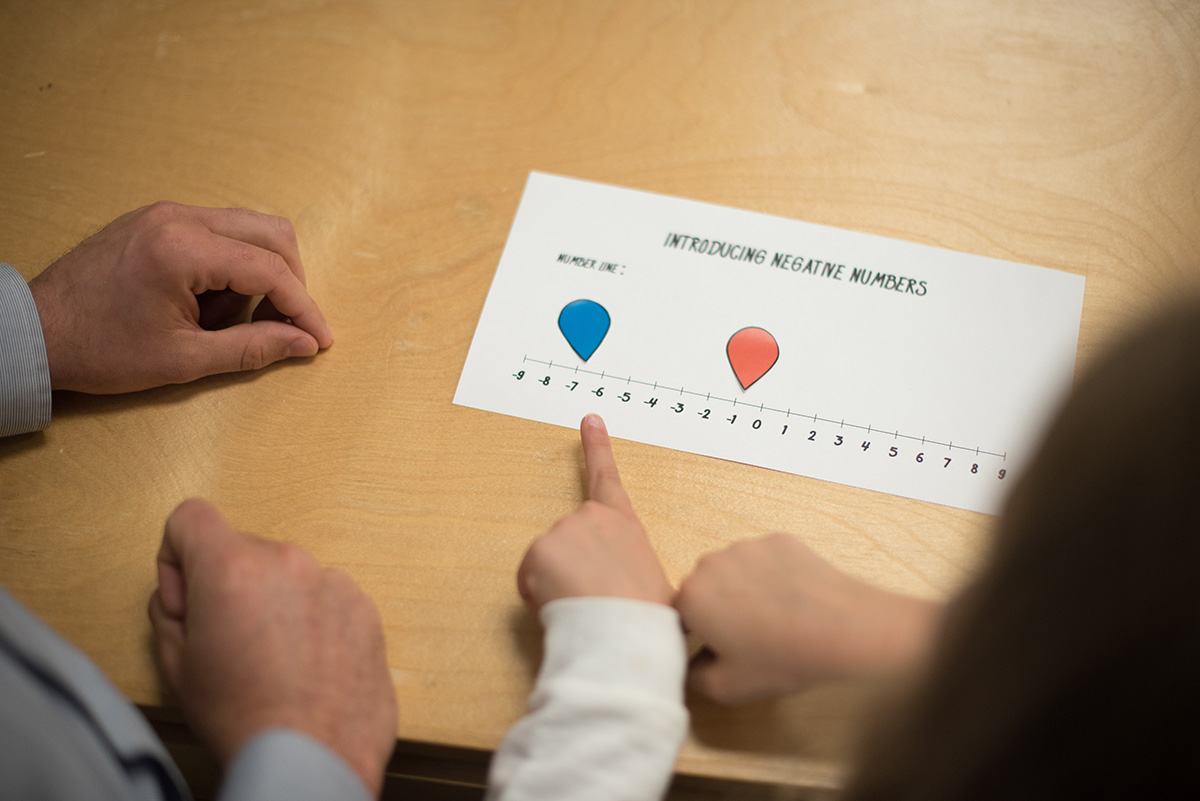
- Now ask your child to compare negative 1 and negative 7 again. Say, “Remember if the number is the farther to the right, it’s the larger.” Then ask, “Which number is larger, negative 1 or negative 7.”
- If your child is struggling with how this can be true, ask, “What would you prefer, to owe me one dollar or seven dollars?”
- Explain that a negative number is like owing money when you don’t have any money at all. It is less than zero. So the bigger the numeral, the smaller or less the value.
- Try comparing several more numbers.
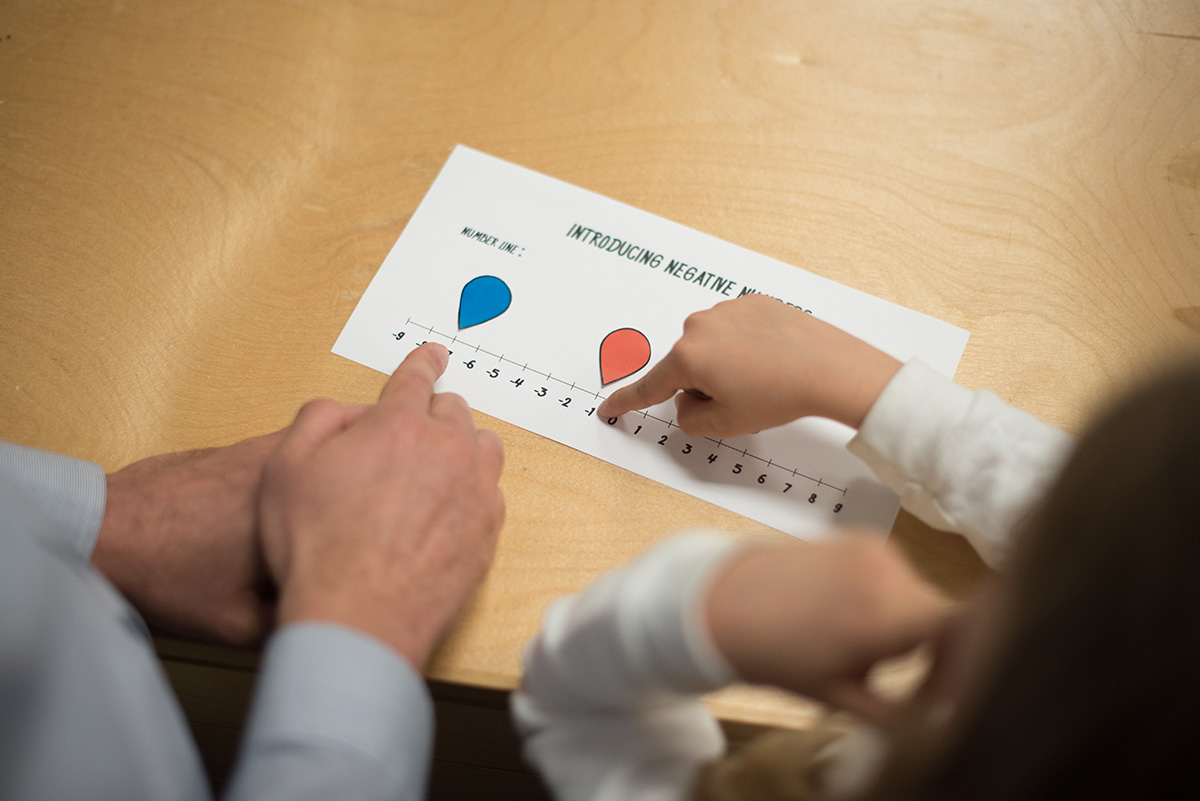 Developing Understanding
Developing Understanding
This is a basic introduction to negative numbers. In the next few days, have your child try these exercises to develop his or her understanding:
- Give your child a number line with negative 10, negative 5, 0, and 10 marked. Have your child fill in the rest of the numbers.
- Create greater-than and less-than exercises for your child, using negative numbers.
- Give your child a set of four or five numbers (including both negative and positive) to arrange from smallest to largest.
- If your child is familiar with coordinate graphs, try extending the x to the left beyond the zero and the y down below the zero.
Try a variety of these activities over the next week or two. Never take more than twenty minutes or so, and make sure you are keeping the time engaging. You will want to revisit negative numbers again in fifth grade. Once you review what you’ve already covered, you can begin to introduce adding with negative numbers.
If you introduce, review, and develop a mathematical concept in the elementary years, your child will be prepared to be successful in junior high and high school math.